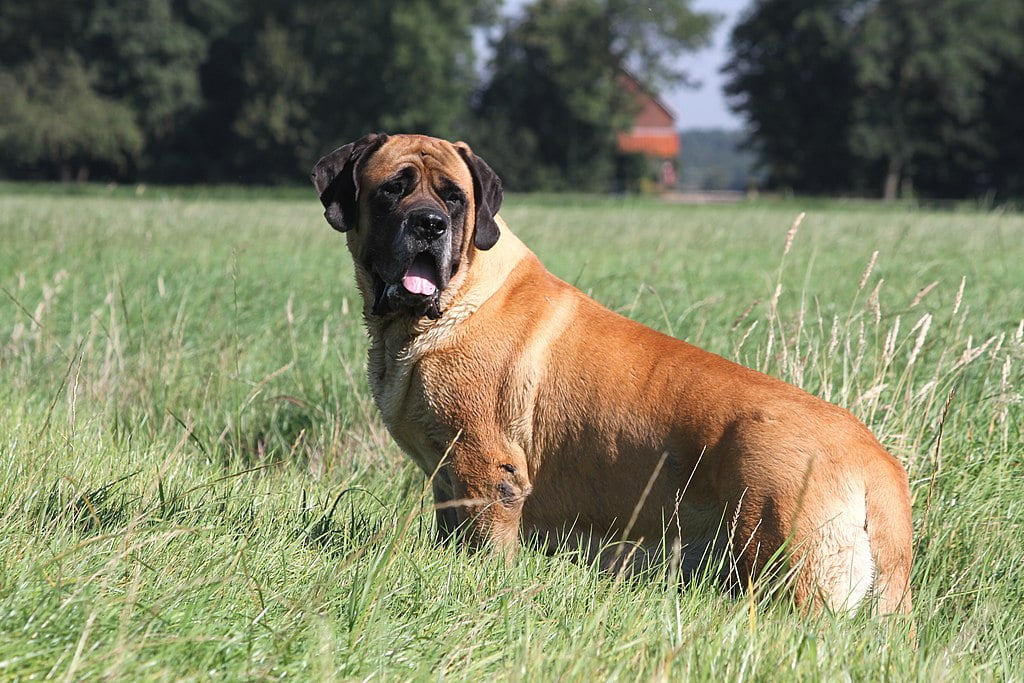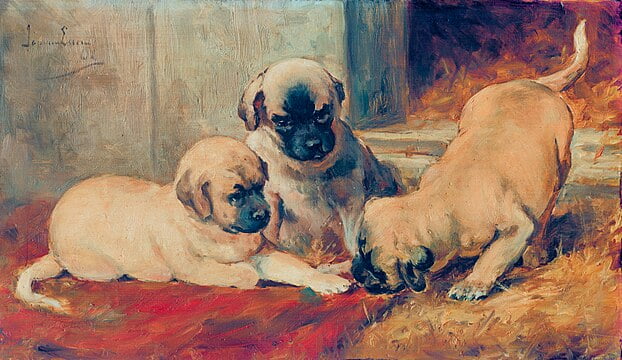
The Mastiff, a breed emblematic of strength and grandeur, belongs to one of the most ancient types of dogs known to humanity. With roots that delve deep into English history, this massive, muscular breed is characterized by its imposing stature, broad head, and gentle eyes. Although their size can be daunting, Mastiffs are renowned for their docile temperament and unwavering loyalty to their families. Their short, dense coat, typically in fawn, apricot, or brindle shades, requires minimal grooming, making upkeep relatively straightforward. As guardians and gentle giants, Mastiffs have secured their place in the hearts of many.
The Mastiff is a member of the AKC Working Group.
Breed Characteristics
| Dog Breed | Mastiff |
| Breed Popularity (AKC) | 37 |
| Country of Origin | England |
| Personality | Loyal, gentle, protective, good-natured |
| Life Expectancy | 6-10 yrs |
| Height | 28-30 in |
| Weight | 120-230 lbs |
| Color | Apricot, Fawn |
| Coat | short, double coat |
| Shedding | Occasional |
| Grooming | Occasional Bath/Brush |
| Health Problems | Hip dysplasia, heart conditions, cancer |
| Trainability | Agreeable |
| Exercise Needs | Regular Exercise |
Mastiff History
Known as one of the oldest and largest breeds, the Mastiff traces its roots back to ancient civilizations in Egypt and Rome. Originating from England, they were used as war dogs, guardians, and later for dogfighting. Derived from ancient Alaunts and Pugnaces, they were known for their strength and courage. Today, despite their imposing size, they’re often described as gentle giants.
Temperament
Mastiffs are gentle giants, known for their protective and calm nature. While they form strong bonds with their families, their size and strength require early training and socialization. Their intelligence aids in trainability, but patience is essential due to their occasional willful nature. They have a moderate energy level, preferring relaxation over intense play. Their protective instincts are strong, making them excellent watchdogs, but they are generally not aggressive unless provoked.
Remember, while breed traits provide a general idea, individual dogs can have personalities that differ from the breed standard. Always spend time getting to know the dog and ensure their needs and temperament align with your lifestyle.
Grooming Requirements
Mastiffs have a short, dense coat that requires minimal grooming. Weekly brushing can help manage shedding and keep their coat healthy. Bathing should be occasional using a quality dog shampoo. Mastiffs can drool significantly, so routine face cleaning might be necessary, along with the regular nail trimming and ear checks.
Mastiff Health
Mastiffs, with a lifespan of 6-10 years, are a giant breed that can be prone to hip and elbow dysplasia, heart conditions, and bloat. Regular health check-ups, a diet tailored for giant breeds, and consistent vaccinations are vital for their well-being.
Exercise Needs
Mastiffs, despite their imposing size, have a relatively low to moderate energy level. Daily short walks combined with playtime sessions are enough for their exercise needs. Due to their size, care should be taken in dog parks to ensure safe interactions. Bonding through calm outdoor activities is beneficial for this gentle giant.
Training
Mastiffs, gentle giants at heart, benefit from structured obedience training to manage their size and strength. Clear commands simplify the potty training process, and crate training provides a secure environment. Addressing behavior problems, especially related to their protective nature, is vital. Socialization from a young age ensures they differentiate between genuine threats and harmless interactions.
Mastiff Pictures



Related Dog Breeds
More Dog Resources
Are you thinking about getting a puppy? Make sure to check out our list of important questions to ask before you adopt a puppy.
We also have many resources to help, from naming your puppy to socialization resources and training tips.
Take me back to the Ultimate Guide to Dog Breeds



